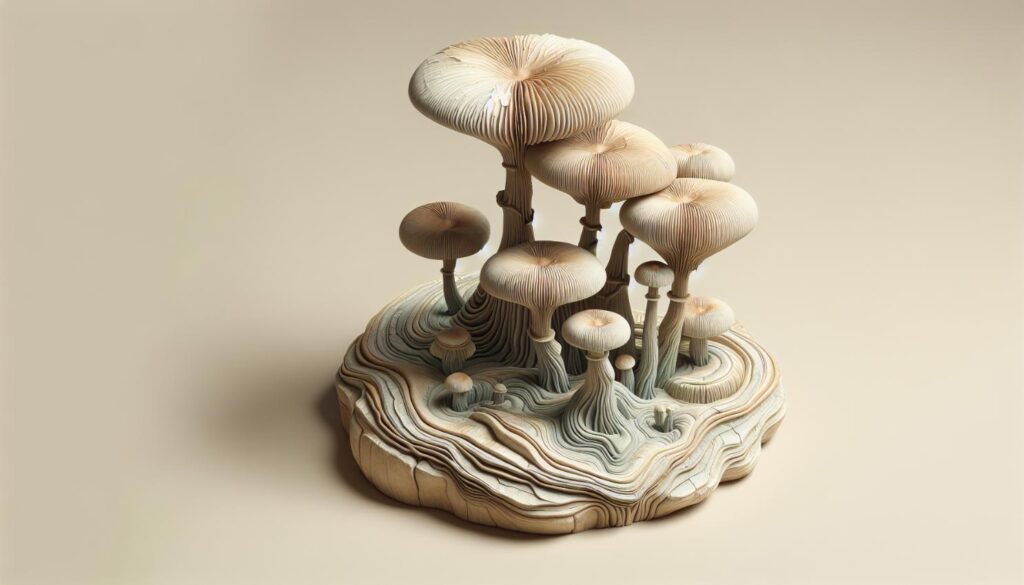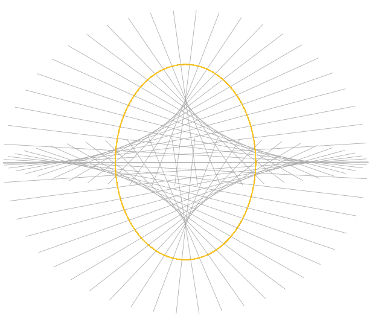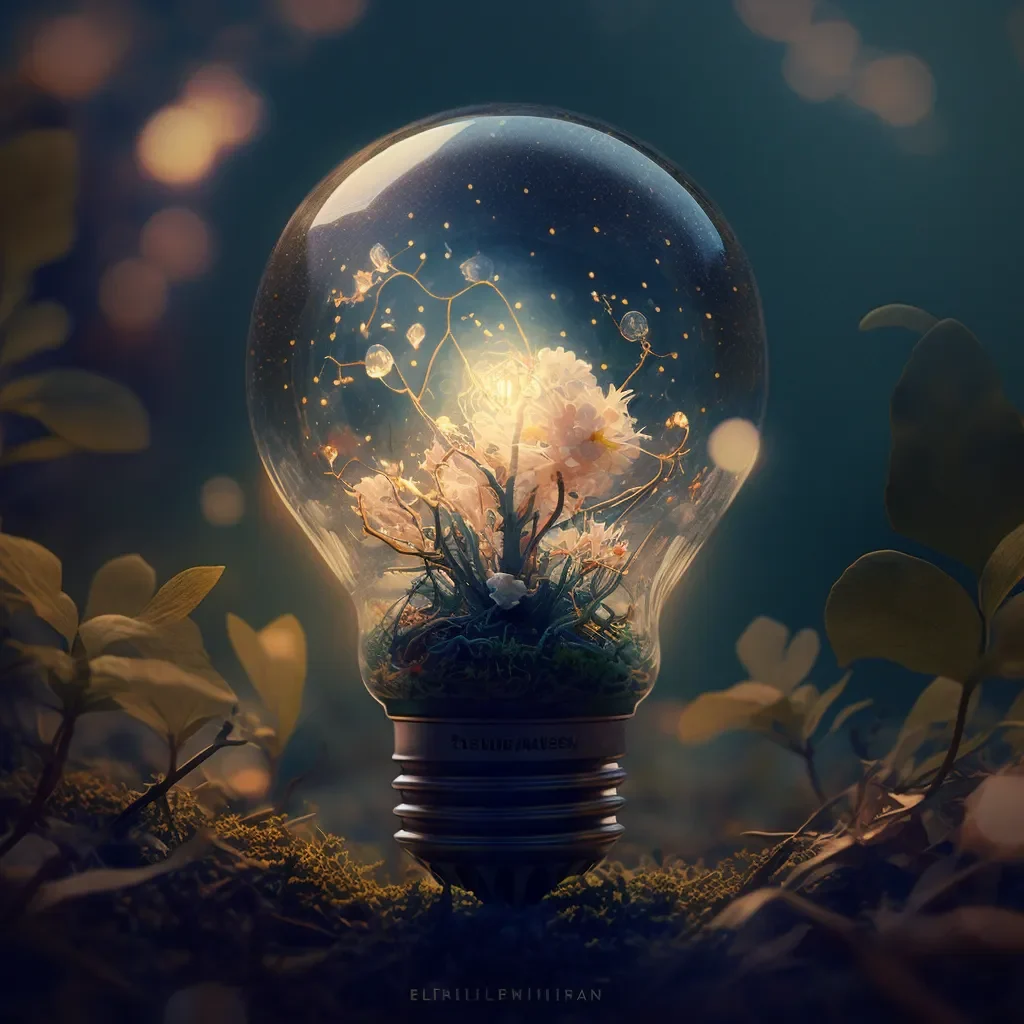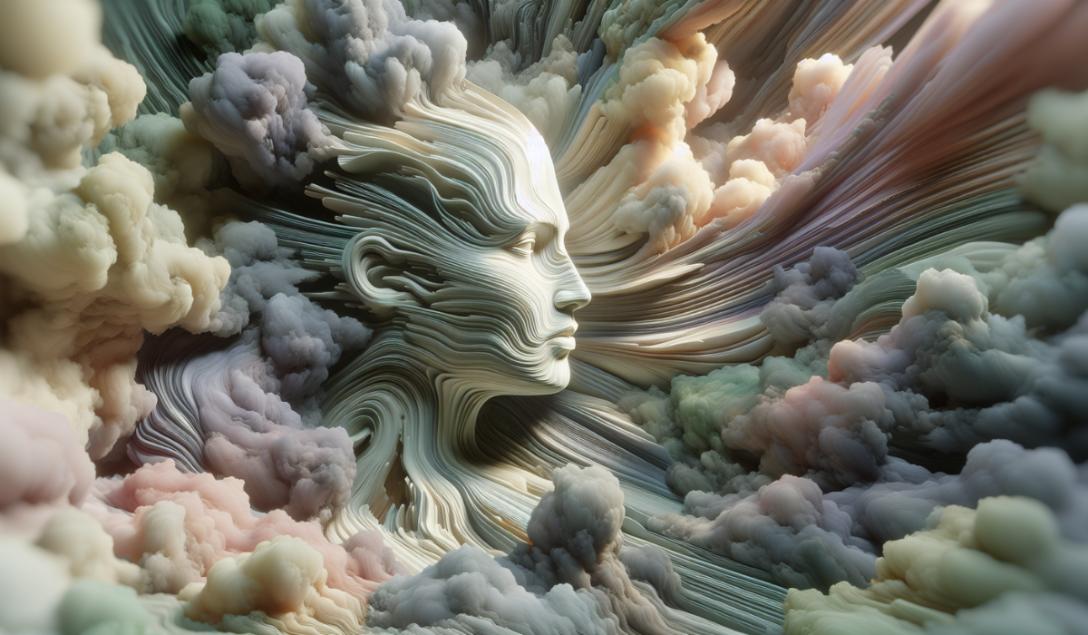Francisca Niklitschek
Francisca Niklitschek
Contributing Authors
Dmitrij Achelrod PhD
What is the Difference Between Ayahuasca and Psilocybin?
Ayahuasca and Psilocybin – are two ancient allies – revered across cultures for their capacity to dissolve mind boundaries, awaken insight and illuminate the depths of the human experience. Both substances have been a sacred companion to indigenous communities for millennia, offering pathways to healing, communion with nature and spiritual revelation.
Ayahuasca is a brew with DMT as its main psychoactive component, supported by MAO inhibitors that allow DMT to work when taken orally. Psilocybin, found in “magic truffles” and “magic mushrooms”, turns into psilocin in the body, both acting on serotonin receptors to produce psychedelic effects. This difference in compounds leads to varied experiences and interactions.
Both psychedelic compounds are now stepping into the spotlight of contemporary research, revealing their extraordinary promise in addressing mental health challenges and fostering personal growth. Yet, as portals to expanded awareness, psilocybin and ayahuasca diverge in pharmacology, cultural context and the landscape of the mind they can unveil.
It’s worth noting that psilocybin has been more extensively studied in academic research compared to ayahuasca. Its effects and safety profile are well documented making it a more accessible and widely understood option for those seeking personal growth or mental health support. Ayahuasca, while equally profound, can cause stronger side effects and often requires a more structured ceremonial context due to its intensity and cultural roots.
This article invites you to explore these two psychedelic pathways and their shared roots in human longing for meaning.
Pharmacological Composition
Ayahuasca:
Ayahuasca, a sacred brew central to Amazonian traditions, derives its profound psychoactive properties from the union of two plants: the vine Banisteriopsis caapi and the leaves of Psychotria viridis, a combination that unlocks a biochemical key. The vine contains MAO inhibitors like harmine and harmaline, while the leaves supply N,N-dimethyltryptamine (DMT), the main psychoactive compound. DMT is inactive when taken orally without MAO inhibitors, as it is rapidly broken down by monoamine oxidase enzymes in the gut and liver. The MAO inhibitors prevent this breakdown, enabling DMT to reach the brain and exert its visionary effects. Recipes vary among practitioners, reflecting local knowledge and ceremonial intent [1][2].
Psilocybin:
Psilocybin is the powerful psychedelic compound found in certain types of fungi commonly known as “magic truffles” and “magic mushrooms”. When consumed, it is converted in the body to psilocin, the active compound responsible for its psychedelic effects [3].
Similarity & Differences:
Both substances act primarily through serotonin receptors, but their active compounds differ. DMT is a non-selective serotonin receptor agonist, with high affinity for 5-HT2A and 5-HT2C receptors, and additional binding to sigma-1 receptors, which may contribute to its effects [4]. Psilocin, derived from psilocybin, also targets 5-HT2A and 5-HT2C receptors, with notable affinity for 5-HT1A and 5-HT2B receptors, but lacks significant sigma-1 receptor activity [5].
This difference in receptor binding suggests that while both induce psychedelic experiences, DMT’s additional interactions, such as with sigma-1 receptors, might lead to unique physiological effects, potentially influencing cellular stress responses under hypoxic conditions [6].
A key pharmacological distinction is the presence of MAO inhibitors in ayahuasca, absent in psilocybin. These inhibitors, such as harmine, prevent the breakdown of DMT, making it orally active. This feature introduces significant drug interaction risks, as MAO inhibitors can interact with medications like antidepressants (e.g., SSRIs) and certain foods (e.g., tyramine-rich foods), potentially leading to serotonin syndrome or hypertensive crises [2]. Psilocybin, lacking MAO inhibitors, does not pose these specific interaction risks, making its pharmacological profile safer. See our article on psychedelic-drug-interactions.
Side Effects and Safety Profile:
Ayahuasca is notably associated with gastrointestinal side effects, such as vomiting and diarrhea, often considered part of its traditional cleansing process. These effects are likely due to both DMT and the MAO inhibitors, which can also cause cardiovascular effects like increased heart rate and blood pressure, especially in combination with other substances [7].
Psilocybin, while also potentially causing nausea, typically has milder gastrointestinal effects and is much less likely to induce severe vomiting or diarrhea. Both can increase heart rate and blood pressure, but ayahuasca’s effects may be more pronounced due to MAO inhibitors.
An unexpected detail is the potential for ayahuasca to have more significant cardiovascular risks, particularly in individuals with pre-existing conditions or those taking medications affected by MAO inhibitors [7]. This contrasts with psilocybin, which, while not risk-free, has a relatively milder cardiovascular impact in clinical settings.
Cultural Background
Ayahuasca, a psychoactive brew made from the Banisteriopsis caapi vine and Psychotria viridis leaves, originates from the Amazon basin, spanning countries like Peru, Brazil, Colombia, and Ecuador. It has been used for thousands of years by indigenous groups such as the Cofán, Shipibo, and others for religious and medicinal purposes [8]. These ceremonies are typically group-based, led by shamans, and involve rituals like singing, chanting, and sometimes dancing, emphasizing a collective spiritual experience. The brew is often referred to as “planta professora” (plant teacher) or “sagrada medicina” (holy medicine), reflecting its role as a teacher and healer [9]. Its use extends to healing, divination, and warfare, with a strong emphasis on accessing unseen realms for information [10].

Psilocybin, found in certain truffles and mushrooms, has a long history in Mesoamerica, particularly in Mexico and Central America, used by cultures such as the Mazatec, Nahua, and Zapotec. Archaeological evidence suggests its use dates back at least 3,000 years, depicted in pre-Columbian sculptures and codices [11]. It was employed in religious, divinatory, and therapeutic contexts, often by shamans for rituals that could be individual or involve small groups [12][13]. This ancient substance has also induced countless spiritual journeys and transformative experiences across time, serving as a key contributor to humanity’s quest for inner wisdom and personal growth. If you are interested in learning more about magic truffles and psilocybin, explore our article What are magic truffles?

While ayahuasca has its roots in the Amazon where Indigenous tribes have used it for millennia for healing, rituals and spiritual connection, psilocybin has a history scattered across multiple cultures. Unlike ayahuasca, their consumption does not require complex preparations, which facilitated their adoption in diverse regions showing a broader geographic distribution, adapting to different ecosystems. Both, however, share a legacy of ancestral wisdom and a modern resurgence driven by science and the pursuit of healing. To dive deeper into the history of psychedelics and their cultural uses over time, check out our article on the History of Psychedelics.
Psychedelic Journey: Contrasting Pathways of Ayahuasca and Psilocybin
While Ayahuasca is ingested as a brewed tea in ceremonial settings under the guidance of experienced practitioners, psilocybin is typically consumed as truffles or mushrooms. Both substances can catalyze profound shifts in consciousness but their experiential landscapes differ in effects and intensity. These variations stem not only from their distinct compositions but also from the cultural and ceremonial frameworks that have shaped their use.
Ayahuasca trips typically last 4-6 hours, as detailed in a comprehensive review [2]. Phenomenologically, they often involve euphoria, a sense of transcending space and time, and interactions with nonhuman beings like spirits or entities, sometimes
likened to near-death experiences [2]. Physical effects include prominent somatic components, with nausea and vomiting (reported in 62% of users) seen as purging toxins and traumas, termed “la purga” or “getting well” [2], which many traditions interpret as a release of emotional or energetic blockages. Its DMT-rich brew can evoke vivid, kaleidoscopic visions, geometric patterns, deep introspection and ancestral figures that feel instructive, even revelatory [14].

Psilocybin trips also last approximately 4-6 hours, aligning with ayahuasca in duration [15]. The experience features visual alterations, including spontaneous formation of complex geometric patterns, enhanced colors, and hallucinations, which users can usually distinguish from reality [16]. Mystical experiences are common at high doses, measured by scales like the Mystical Experience Questionnaire, involving feelings of unity and transcendence, often described as personally and spiritually significant [16]. Physical effects may include increased heart rate or nausea, but vomiting is less characteristic compared to ayahuasca [17].
Psilocybin tends to guide users through introspective landscapes with a lighter touch. Its effects, while deeply transformative, are more often reported with a sense of warmth and playful curiosity, allowing us to observe our inner world with compassionate detachment. This gentler effect makes psilocybin an ally for those new to psychedelic exploration.
To make it easier for you to compare both substances, we prepared a table outlining key differences in trip experiences:
Aspect | Ayahuasca | Psilocybin |
Duration | 4-6 hours | 4-6 hours |
Visual Effects | Consistent themes (nature, animals, entity contact) | Varied (geometric patterns, enhanced colors) |
Entity Contact | Common, often with nonhuman beings | Less emphasized, though possible |
Physical Effects | Nausea and vomiting (purging, 62% of users) | May include nausea, but vomiting less common |
Mystical Experiences | Unity, harmony, interactions with entities | Unity, transcendence |
Set and Setting | Ritualistic, controlled environment often with shamans | Influenced by environment, can vary from clinical to recreational settings |
It is worth noticing that every psychedelic experience is different and it is deeply affected by the psychological preparation you did, the intentions you have, and circumstances surrounding their use. Both substances underscore the importance of context, which profoundly shapes the outcomes.

While ayahuasca potentially offers a more physically intense journey under the guidance of experienced practitioners – better suited for those seeking a spiritually guided experience – many people live a transformative and deeply introspective experience with psilocybin – ideal for those looking for a structured and safe setting.
To find out which altered states of consciousness programs might resonate most with you, explore our article How to Pick a Psychedelic Retreat that Resonates with your Personal Values and Beliefs. For people seeking a carefully curated setting that aligns with their personal need for professionalism and outstanding quality, Evolute Institute offers legal psychedelic retreats with psilocybin-containing truffles that are thoughtfully created to provide a safe and transformative experience. Discover more about our program by exploring the EvoSHIFT retreat on our website.
Preparing for the Journey:
Embarking on a psychedelic experience, whether with psilocybin or ayahuasca, necessitates a period of intentional preparation that encompasses both psychological and physiological dimensions. While both substances share therapeutic potential, their preparatory rituals diverge significantly, reflecting their distinct cultural origins and biochemical profiles. Together, these practices remind us that profound journeys begin long before the first dose, rooted in respect for the body, mind, and the ancient wisdom these medicines carry.
A critical element that influences the outcome of a psychedelic experience is the “set and setting”. On one hand, something fundamental in the preparation process is defining your intentions “set”, which is the formulation of meaningful goals or aspirations prior to the experience, often representing our purpose for engaging with the substance [14]. Research indicates that participants who articulate clear intentions before their psychedelic sessions are more likely to report positive therapeutic outcomes, suggesting that intention acts as a guiding compass for the psychedelic experience [18].
Equally important is the creation of a safe and supportive “setting.” A calm, controlled environment, often guided by a trained facilitator, is crucial for navigating the often intense flow of emotions and sensations [21]. Structured sessions, in contrast to solitary use, can mitigate the risk of anxiety or disorientation, transforming the experience into a safer exploration of the mind.
Psilocybin mushrooms:
For psilocybin, preparation emphasizes mental and emotional groundwork [19]. Individuals are encouraged to engage in reflective practices, such as journaling, meditation, or discussions with a therapist/facilitator, to clarify their intentions – whether they seek emotional healing, creative inspiration, or spiritual exploration [20].
Ayahuasca:
In contrast, ayahuasca preparation is steeped in ceremonial rigor, emphasizing physical and spiritual purification. Given the presence of potent monoamine oxidase inhibitors (MAOIs) in the ayahuasca brew, participants must adhere to strict dietary restrictions for several weeks beforehand to avoid potentially dangerous interactions [22]. This typically involves eliminating tyramine-rich foods (e.g., aged cheeses, fermented products, cured meats) and abstaining from alcohol, recreational drugs, and certain medications, including selective serotonin reuptake inhibitors (SSRIs). These restrictions are not merely tradition, they are biochemical necessities, as MAOIs can trigger hypertensive crises or serotonin syndrome when combined with incompatible substances, significantly elevating the risk of severe side effects [22].
Regardless of whether one is navigating the introspective waves of psilocybin or the purgative visions of ayahuasca, mental resilience and consistent post-experience integration practices (e.g., therapy, journaling, mindfulness) are critical for translating transient insights into sustained personal growth.
In our Psychedelic Retreats program in the Netherlands at Evolute Institute, every step is designed to ensure safety, depth, and personal growth. From the initial stages of thoughtful preparation and building a cohesive group dynamic to the immersive experience of the ceremony and structured integration afterward. This journey not only provides a unique exploration of the mind, but also supports participants in integrating their insights into their everyday lives.

Therapeutic Uses: Psilocybin and Ayahuasca as Catalysts for Brain Rewiring
Research illuminates how psychedelics, including psilocybin and DMT – the active compound in magic truffles or mushrooms and ayahuasca – can disrupt typical brain functioning, specifically by reducing activity within the Default Mode Network (DMN), a brain region associated with self-perception, narrative construction, and ego-centric thought [23]. This transient disruption of the DMN may diminish self-referential thinking and foster a sense of interconnectedness, potentially breaking down rigid thought patterns associated with various mental health conditions, such as depression, anxiety, addiction, and post-traumatic stress disorder (PTSD).
These substances profoundly influence human consciousness by enhancing connectivity between different brain regions, facilitating deeper self-exploration and promoting neuroplasticity – the brain’s capacity to reorganize neural pathways. Individuals often report improved emotional regulation, reduced reactivity to stressors, and heightened creativity, suggesting a revitalization of the brain’s capacity to adapt and learn [24]. This state can be a catalyst for deep introspection, potentially sparking transformative personal growth, and even opening new perspectives on one’s professional path.
The observed changes in brain connectivity facilitate a journey of deep self-exploration, which can catalyze profound psychological and emotional growth. These profound experiences pave the way for lasting, authentic change, fostering a more integrated and meaningful life. To learn more about how psychedelics affect the brain, explore our article Your Brain on Psychedelics: Intro to the Neuroscience of Psilocybin.

The importance of post-experience integration for both psilocybin and ayahuasca plays a crucial role in translating these profound psychedelic experiences into tangible and meaningful benefits in mental well-being, emotional development, and self-awareness. Without proper integration, these experiences can be disorienting and confusing, with no real impact in the long-term. If you are interested in learning more about integration, you can read our article Psychedelic Integration: What is it and how does it work?.
Understanding this potential for personal and professional evolution, our retreats are meticulously designed to facilitate a transformative experience. Functioning as both Personal Development Retreats and Professional Development Programs, they unlock deeper layers of consciousness, clarify individual purpose, and ultimately translate newfound insights into everyday leadership and authenticity.
Research
While both ayahuasca and psilocybin have strong therapeutic potential for mental health and personal development, research into psilocybin is more extensive and methodologically rigorous compared to that on ayahuasca.
Ayahuasca:
Ayahuasca – which contains DMT and MAO inhibitors – is studied for its effects on depression, anxiety, and substance dependence. Recent clinical trials, such as a double-blind, randomized placebo-controlled trial in 29 patients with treatment-resistant depression, suggest rapid antidepressant effects [25]. Observational studies and systematic reviews also indicate potential benefits for substance dependence, with one study reviewed showing efficacy for drug dependence [26].
Psilocybin:
Psilocybin – active compound in magic truffles or mushrooms – has been extensively studied for its antidepressant, anxiolytic, and antiaddictive properties. Clinical trials, such as those from Imperial College London, demonstrate significant reductions in depression scores, with effects lasting up to six months in treatment-resistant depression [27]. It is particularly noted for end-of-life anxiety in cancer patients, with large effect sizes in meta-analyses [28].
Psilocybin has a larger volume of research, with 2,460 PubMed articles and over 134 registered clinical trials, indicating extensive investigation [29]. In contrast, ayahuasca has 666 PubMed articles, with fewer clinical trials, estimated to be in the range of 10-20 based on available data, reflecting less extensive research [30]. This disparity is partly due to psilocybin’s resurgence in research since the 2000s, while ayahuasca studies have been more recent and often observational.
Nevertheless, psilocybin stands out for its superior safety profile compared to ayahuasca. Unlike ayahuasca, which contains MAOIs that require careful dietary restrictions to avoid serious interactions, psilocybin is free from these risks. This safety advantage makes psilocybin more appealing for research and treatment, offering a promising avenue for addressing mental health challenges without the complex risks associated with MAOIs [31].
Want to learn more about the complex interactions between psilocybin and various classes of psychiatric drugs? Check out our in-depth analysis of Psilocybin and its potential interactions with antidepressants and other psychiatric drugs, offering insights for those considering psilocybin in self-exploration retreats setting.
In Conclusion
Psilocybin and ayahuasca, ancient allies in the quest for expanded awareness, are now illuminating modern approaches to mental health and personal growth. While both substances hold immense potential, they offer distinct pathways shaped by their composition, cultural context, and experiential landscapes. Psilocybin, with its well-documented effects and safety profile, presents a more accessible and widely
understood option for those seeking introspective exploration and structured therapeutic benefits.
Ayahuasca, on the other hand, offers a more intense and spiritually guided experience, rooted in Amazonian traditions and demanding careful preparation and integration. Its MAOI properties require strict dietary adherence to avoid dangerous interactions, highlighting the importance of ceremonial context and experienced practitioners. While research on ayahuasca is less extensive than on psilocybin, its potential for dismantling deep-seated emotional blockages and promoting holistic healing warrants further investigation.

Ultimately, both psilocybin and ayahuasca underscore the importance of intentional preparation, supportive settings, and post-experience integration for translating fleeting insights into lasting transformation. As research continues to unravel the complex interplay between these substances and the human brain, it becomes increasingly clear that these psychedelic pathways offer unique opportunities to redefine recovery as the cultivation of self-awareness and a deeper connection to oneself and the world.
The EvoSHIFT retreat at Evolute Institute is a carefully crafted journey for deep-transformation and self-discovery. With expert guidance, a supportive community, and a commitment to personal development, this experience stands as a profound opportunity for those seeking to explore the depths of their minds and unlock new potentials within themselves. Are you ready to discover the transformative power that lies within you?
P.S. If you are preparing for a psychedelic retreat this year, you might find this article useful: “How to recognize a quality retreat in 2025” or dive into our “Deep inner work series“, to explore the traditions of thought and practice that shape the Evolute approach.
Bibliography
[1] ‘Ayahuasca: Use, Benefits, and Side Effects’, Healthline. Accessed: Feb. 28, 2025. [Online]. Available: https://www.healthline.com/nutrition/ayahuasca
[2] S. G. D. Ruffell et al., ‘Ayahuasca: A review of historical, pharmacological, and therapeutic aspects’, PCN Rep. Psychiatry Clin. Neurosci., vol. 2, no. 4, p. e146, Dec. 2023, doi: 10.1002/pcn5.146.
[3] ‘Psilocybin’, Wikipedia. Feb. 24, 2025. Accessed: Feb. 28, 2025. [Online]. Available: https://en.wikipedia.org/w/index.php?title=Psilocybin&oldid=1277477963
[4] ‘N,N-Dimethyltryptamine’, Wikipedia. Feb. 23, 2025. Accessed: Feb. 28, 2025. [Online]. Available: https://en.wikipedia.org/w/index.php?title=N,N-Dimethyltryptamine&oldid=1277161122
[5] T. Passie, J. Seifert, U. Schneider, and H. M. Emrich, ‘The pharmacology of psilocybin’, Addict. Biol., vol. 7, no. 4, pp. 357–364, Oct. 2002, doi: 10.1080/1355621021000005937.
[6] T. M. Carbonaro and M. B. Gatch, ‘Neuropharmacology of N,N-Dimethyltryptamine’, Brain Res. Bull., vol. 126, no. Pt 1, pp. 74–88, Sep. 2016, doi: 10.1016/j.brainresbull.2016.04.016.
[7] D. Fontanilla, M. Johannessen, A. R. Hajipour, N. V. Cozzi, M. B. Jackson, and A. E. Ruoho, ‘The Hallucinogen N,N-Dimethyltryptamine (DMT) Is an Endogenous Sigma-1 Receptor Regulator’, Science, vol. 323, no. 5916, pp. 934–937, Feb. 2009, doi: 10.1126/science.1166127.
[8] ‘Cultural Context and the Beneficial Applications of Ayahuasca’. Accessed: Feb. 28, 2025. [Online]. Available: https://www.lakeforest.edu/news/cultural-context-and-the-beneficial-applications-of-ayahuasca
[9] ‘Ayahuasca’, Wikipedia. Feb. 28, 2025. Accessed: Feb. 28, 2025. [Online]. Available: https://en.wikipedia.org/w/index.php?title=Ayahuasca&oldid=1278016212
[10] ‘Ayahuasca: Shamanism Shared Across Cultures | Cultural Survival’. Accessed: Feb. 28, 2025. [Online]. Available: https://www.culturalsurvival.org/publications/cultural-survival-quarterly/ayahuasca-shamanism-shared-across-cultures
[11] ‘Psilocybin mushroom’, Wikipedia. Feb. 26, 2025. Accessed: Feb. 28, 2025. [Online]. Available: https://en.wikipedia.org/w/index.php?title=Psilocybin_mushroom&oldid=1277720941
[12] ‘Ritual and Religious Uses of Psilocybe Mushrooms in Mesoamerica | Center for the Study of World Religions’. Accessed: Feb. 28, 2025. [Online]. Available: https://cswr.hds.harvard.edu/news/2024/10/ritual-and-religious-uses-psilocybe-mushrooms-mesoamerica
[13] ‘Drug cultures around the world’. Accessed: Feb. 28, 2025. [Online]. Available: https://www.nationalgeographic.com/travel/article/drug-culture-around-the-world
[14] W. M. Campo and A. M. Yali, ‘Psychedelic use and psychological flexibility: The role of meaningful intention and decentering’, Aug. 2024, doi: 10.1556/2054.2024.00350.
[15] ‘Psilocybin – Alcohol and Drug Foundation’. Accessed: Feb. 28, 2025. [Online]. Available: https://adf.org.au/drug-facts/psilocybin/
[16] ‘Psychedelic experience’, Wikipedia. Feb. 20, 2025. Accessed: Feb. 28, 2025. [Online]. Available: https://en.wikipedia.org/w/index.php?title=Psychedelic_experience&oldid=1276693781
[17] N. I. on D. Abuse, ‘Psilocybin (Magic Mushrooms) | National Institute on Drug Abuse (NIDA)’. Accessed: Feb. 28, 2025. [Online]. Available: https://nida.nih.gov/research-topics/psilocybin-magic-mushrooms
[18] M. Johnson, W. Richards, and R. Griffiths, ‘Human hallucinogen research: guidelines for safety’, J. Psychopharmacol. Oxf. Engl., vol. 22, no. 6, pp. 603–620, Aug. 2008, doi: 10.1177/0269881108093587.
[19] ‘Preparing the Body for Psychedelic Experiences Psychedelic Support’. Accessed: Feb. 28, 2025. [Online]. Available: https://psychedelic.support/resources/preparing-body-for-psychedelic-experiences/
[20] L. Roseman, D. J. Nutt, and R. L. Carhart-Harris, ‘Quality of Acute Psychedelic Experience Predicts Therapeutic Efficacy of Psilocybin for Treatment-Resistant Depression’, Front. Pharmacol., vol. 8, p. 974, 2017, doi: 10.3389/fphar.2017.00974.
[21] ‘How to Take Shrooms Safely Psychedelic Support’. Accessed: Feb. 28, 2025. [Online]. Available: https://psychedelic.support/resources/how-to-take-shrooms-safely/
[22] A. N. Edinoff et al., ‘Clinically Relevant Drug Interactions with Monoamine Oxidase Inhibitors’, Health Psychol. Res., vol. 10, no. 4, p. 39576, doi: 10.52965/001c.39576.
[23] R. Millière, R. L. Carhart-Harris, L. Roseman, F.-M. Trautwein, and A. Berkovich-Ohana, ‘Psychedelics, Meditation, and Self-Consciousness’, Front. Psychol., vol. 9, Sep. 2018, doi: 10.3389/fpsyg.2018.01475.
[24] J. C. Bouso et al., ‘Long-term use of psychedelic drugs is associated with differences in brain structure and personality in humans’, Eur. Neuropsychopharmacol. J. Eur. Coll. Neuropsychopharmacol., vol. 25, no. 4, pp. 483–492, Apr. 2015, doi: 10.1016/j.euroneuro.2015.01.008.
[25] F. Palhano-Fontes et al., ‘Rapid antidepressant effects of the psychedelic ayahuasca in treatment-resistant depression: a randomized placebo-controlled trial’, Psychol. Med., vol. 49, no. 4, pp. 655–663, Mar. 2019, doi: 10.1017/S0033291718001356.
[26] R. G. dos Santos, F. L. Osório, J. A. S. Crippa, J. Riba, A. W. Zuardi, and J. E. C. Hallak, ‘Antidepressive, anxiolytic, and antiaddictive effects of ayahuasca, psilocybin and lysergic acid diethylamide (LSD): a systematic review of clinical trials published in the last 25 years’, Ther. Adv. Psychopharmacol., vol. 6, no. 3, pp. 193–213, Jun. 2016, doi: 10.1177/2045125316638008.
[27] R. L. Carhart-Harris et al., ‘Psilocybin for treatment-resistant depression: fMRI-measured brain mechanisms’, Sci. Rep., vol. 7, no. 1, p. 13187, Oct. 2017, doi: 10.1038/s41598-017-13282-7.
[28] R. Irizarry, A. Winczura, O. Dimassi, N. Dhillon, A. Minhas, and J. Larice, ‘Psilocybin as a Treatment for Psychiatric Illness: A Meta-Analysis’, Cureus, vol. 14, no. 11, p. e31796, doi: 10.7759/cureus.31796.
[29] S. A. Norring and M. G. Spigarelli, ‘The Promise of Therapeutic Psilocybin: An Evaluation of the 134 Clinical Trials, 54 Potential Indications, and 0 Marketing Approvals on ClinicalTrials.gov’, Drug Des. Devel. Ther., vol. 18, pp. 1143–1151, Apr. 2024, doi: 10.2147/DDDT.S443177.
[30] S. Ziff, B. Stern, G. Lewis, M. Majeed, and V. R. Gorantla, ‘Analysis of Psilocybin-Assisted Therapy in Medicine: A Narrative Review’, Cureus, vol. 14, no. 2, p. e21944, doi: 10.7759/cureus.21944.
[31] A. Halman, G. Kong, J. Sarris, and D. Perkins, ‘Drug–drug interactions involving classic psychedelics: A systematic review’, J. Psychopharmacol. (Oxf.), vol. 38, no. 1, pp. 3–18, Jan. 2024, doi: 10.1177/02698811231211219.
FREQUENTLY ASKED QUESTIONS (FAQ)
Ayahuasca is a traditional Amazonian brew made from the Banisteriopsis caapi vine and the leaves of Psychotria viridis, containing DMT. Psilocybin is a naturally occurring psychedelic compound found in “magic mushrooms” and “magic truffles”. Both induce altered states of consciousness but have different cultural roots, chemical profiles, and effects.
Both can be powerful, but Ayahuasca is often considered more intense due to its purgative effects, and the presence of MAO inhibitors. Psilocybin may offer a gentler psychedelic experience, especially at moderate doses.
Yes. Both are used in therapeutic, spiritual, and shamanic settings to address emotional trauma, depression, addiction, and existential distress. While both ayahuasca and psilocybin have strong therapeutic potential for mental health and personal development, research into psilocybin is more extensive and methodologically rigorous compared to that on ayahuasca.
Both have relatively low toxicity and are not considered physically addictive. However, Ayahuasca can cause intense purging and may interact with medications or health conditions. Psilocybin has a safer profile in clinical contexts, but both require responsible use and guidance.
This depends on the individual. Many people report deeply spiritual experiences with both substances. Ayahuasca is traditionally used in sacred ceremonies with shamans, while psilocybin can also lead to mystical states, especially in guided or meditative settings.
No, combining them is strongly discouraged. Both are powerful on their own, and mixing them can be unpredictable and dangerous. Always consult an experienced practitioner or healthcare professional.

Patrick Liebl,
Lead Facilitator & Integration Expert
Curious to learn more?
We invite you to schedule a call with us. Together, we can explore any questions you may have. We can explore whether a program with a legal psychedelic experience is right for you at this time.
“We are here to support your exploration, at your pace, with no expectations.” – Patrick Liebl





